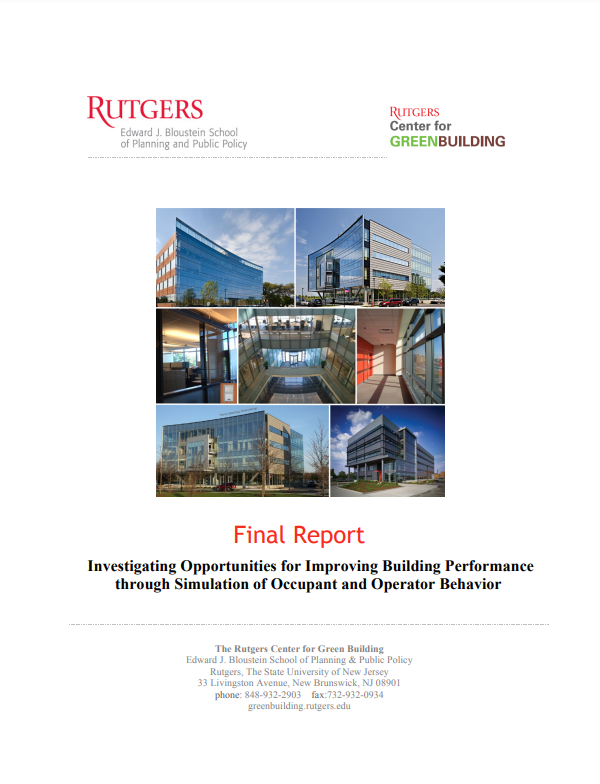USGBC Green Building Research Fund Award
This project had two goals: (1) improve the usability of green buildings, and (2) improve our ability to model human-technology interactions. Its motivation was the documented prevalence of buildings failing to perform as designers intended, in part because operators do not (or cannot) operate the building as intended, and because occupants often behave differently than designers expect. The empirical foundation for advancing the goals of this project was a set of case studies of LEED certified commercial buildings drawn from the portfolio of Rutgers Green Building Benefits Consortium members. Methods included a multidisciplinary building performance evaluation protocol that includes both user-oriented post-occupancy evaluation and engineering evaluation.
Our USGBC evaluations of LEED (Leadership in Energy and Environmental Design) commercial office buildings relied on a cross-sectional research design wherein walk-through observations and interviews with building occupants were supplemented with online surveys to describe their satisfaction and experiences with their workplace. Building data were collected to help focus on how well the building meets its energy performance goals as well as the role of human agency in mediating these outcomes. The field data on occupant behavior in conjunction with building performance metrics have been subsequently included in the ongoing advancement of the Center’s agent based modeling framework. Building simulation modeling incorporates occupant-building interaction parameters to help inform policy and design for improved building performance in terms of energy and resource consumption as well as occupant satisfaction and well-being.
